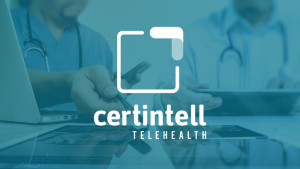Good health is best achieved when socioeconomic factors are stabilized, but the path to getting there can be extremely challenging, and seemingly impossible, for patients in need. In this webinar recap, speakers cover how to provide underserved patients with the support and care they deserve and alleviate patient burden.
Webinar Presenters:
- Kathryn Lawler, Executive Director, ARCHI
- Meredith Swartz, Consultant, ARCHI
- Jennifer Moore, Community Health Worker, Grady Health System
- Jasmine Simone, Community Health Worker, Mercy Care Atlanta
The current health care system is complex, disjointed, and often does not achieve results for patients in need. It relies heavily on the patients themselves to manage the different obstacles, including administrative work, they have to overcome in order for them to receive patient care. During the Atlantic Regional Collaborative for Health Improvement (ARCHI) webinar hosted on June 22, entitled “Inverting the Burden,” speakers from ARCHI, Grady Health System and Mercy Care in Atlanta came together to talk about the best way to maintain health equity for underserved patients.
The Burden of Navigation Falls Heavily on the Patient
Many communities face challenges when addressing the non-clinical needs of individuals. It’s a known fact that social determinants of health (SDOH) affect patient care. However, speakers in the webinar pointed out how the industry often acts on the mindset that an individual is a product of their own actions. This mindset then leads to prejudices that can then lead to inequities in a damaging domino-effect. Underlying socioeconomic needs can be some of the biggest drivers of persistent health challenges, and that is irrefutable. Although these issues are sometimes recognized, this doesn’t mean any concrete changes are occurring.
“Way too often when an issue is identified as a driver to health challenges, it can very often not result in services, as patients can be waitlisted, or deemed ineligible with no services available to them,” Lawler said. “The current system doesn’t get people to where they need to go.”
Lawler went on to explain how the current health care system is divided into many silos that are divided by sectors or funding sources, but that are not reflective of how needs emerge, and thus, how care needs to be delivered. Most underserved individuals must navigate the health care system, while also overcoming challenges revolving around housing, transportation, food and nutrition, and more.
As a result, individuals and community health workers assisting these patients are left with the responsibility of innovating ways to achieve equitable health outcomes. At this point in the webinar, Swartz proceeded to explain the need to invert the burden away from those in need. Instead, patients should be able to focus on stabilizing their lives and families, instead of prioritizing administrative paperwork for the services they need.
Through the inversion of the current system, we can potentially streamline health care to provide patient care quicker and more efficiently.
“We designed the system we have,” Swartz emphasized. “This means we can redesign the system, and to do so we must start by meeting people where they are, coordinating care, and inverting the burden.”
Best Practices to Invert Patient Burden
There are two requirements when inverting the burden. Health care workers must meet people where they are and people must be put at the center of care (what we at Certintell refer to as “patient-centered care”).
People will seek care at different points in their life. As a result, some patients are ready to take the next steps of care; some are encouraged to be proactive by outside sources; and some need one-on-one assistance with paperwork and other prep steps before they will be able to reach their goals. Regardless of what stage of care a patient falls under, they can be met, engaged, and supported.
As community health workers, Moore and Simone interact with patients on a daily basis to help them define and reach their goals. They offered insight on how they help patients who are struggling to navigate the system, and what other health care workers can do in order to make a difference in their patient’s lives.
First, Moore explained how she addresses barriers patients face when trying to gain access to services such as housing, transportation, or food and nutrition.
“I provide a relaxed conversational approach. Instead of focusing on why a patient may need this item, I look at what steps they have to take in order for them to get it. After this victory is achieved, we can then dive into the problem that led them to need the assistance, and what they can do to prevent these issues in the future. You have to remember that you are asking for personal information from these people so you have to be open and ready for any response without any judgment of what they might say.”
Simone then took over the discussion as she shared her methodology for patient interactions that don’t go according to plan.
“I always focus on the ‘and.’ When I am talking with a patient about different barriers that prevented them from submitting administrative work for services, or what happened that caused them to miss an appointment I ask one question: ‘And what are we going to do about it?’”
Asking this question promotes next steps. As health care workers we must recognize that life happens and problems arise everyday, but just because something happened to knock patients down, doesn’t mean we should just give up on them achieving care. Instead, it is up to us to try and find the best solution to get them back on their feet.
Simone closed the webinar with some final words that encompass the importance of the work they do.
“These people are saying that they need help. They could have given up, but instead they are asking for help. We have to remind them that even if they feel like they are failing, they have to look at the moment by moment successes they have. If we help patients define and achieve their health care goals, whether it be managing their chronic conditions or finding more ways to eat healthier and be more physically active, then we can help them break through the challenges that these patients are facing everyday. Optimism is contagious. So it is up to us to provide the support our patients need in order to truly allow them to be successful.”
About the Speakers
Kathryn Lawler and Meredith Swartz work for ARCHI, a company that aims to shift the burden of the health care system from patients to administrators. ARCHI has worked with other organizations in the surrounding area to create a “Resources Hub,” that merges multiple aspects of patient care into one centralized organization. Jennifer Moore and Jasmine Simone are both health care workers who work for Grady Health System and Mercy Care in Atlanta, respectively. They focus on helping patients achieve their lifestyle goals, which can range from obtaining housing, to securing transportation, to managing their chronic conditions. Both Moore and Simone work to spread awareness of the struggles patients face when navigating the health care system, and what we as health care workers can do to further support those in need.
Looking For Help?
If you have underserved patients who need one-on-one care to help them achieve their health care goals, Certintell is ready to help give the support they need. With certified health coaches who are trained in managing patient health on an individual basis, patients can have assistance setting, reaching, and achieving their health goals. With telehealth services, patients are able to attend virtual meetings that fit their schedule in the comfort of their own home.
To learn more on how health coaches can help deliver patient care, schedule a demo today.
RELATED ARTICLES



